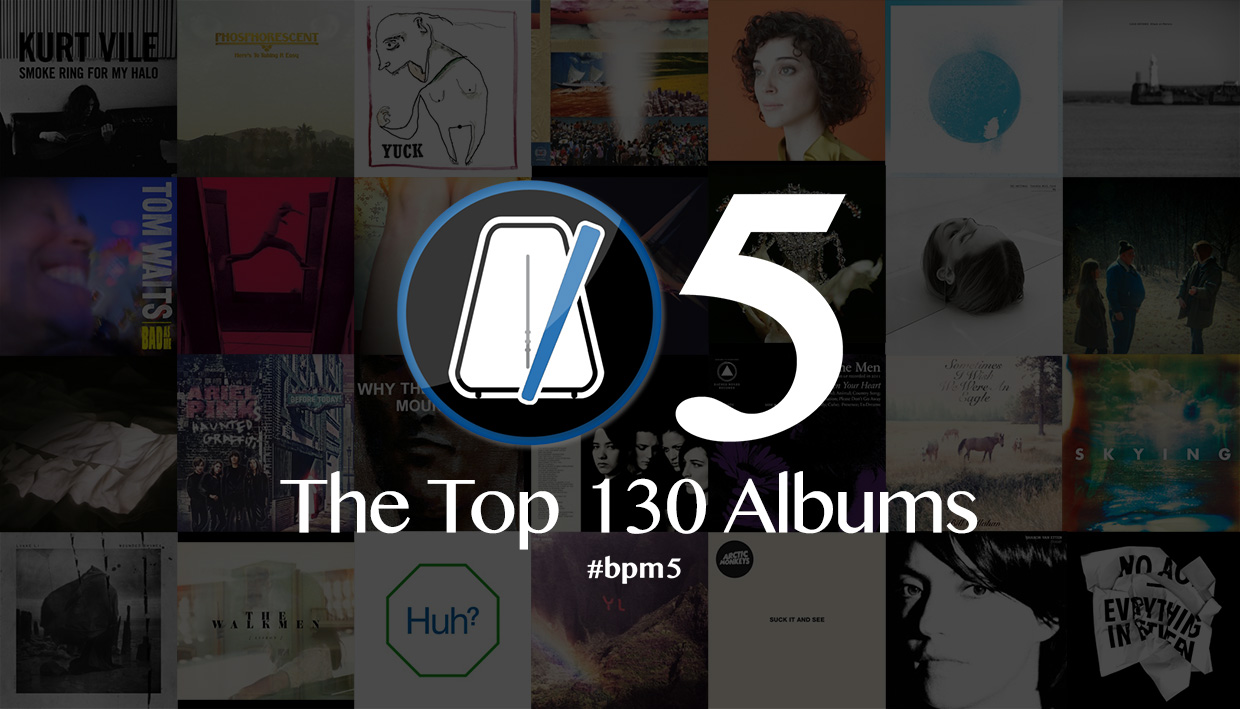
130
Iceage
You’re Nothing
[Matador; 2013]
You’re Nothing hit like a bolt from the blue at the beginning of a lacklustre 2013 release calendar, and while things picked up, few other records this year can go toe-to-toe with it still. A 28 minute package of pure visceral thrills, on their sophomore effort the Danish young guns spat bile, sneered, jabbed and got under your skin. In more ways than one too – You’re Nothing is one of the most hook-happy albums to emerge from this field in yonks, proudly displaying a silver lining of pop in amongst the immensely stormy clouds. For a record that doubts our morals, proclaims our worthlessness and rattles against the futility of basic affection, it seems wholly content with allowing us to at least chant along in unison, following in lockstep (lol fascism) as they trudge forward to the militaristic snares. “Wounded Hearts” especially clearly shows that lead singer Elias Bender Rønnenfelt has been burnt since New Brigade dropped a couple of years back, and so his natural reaction is to torch everything around him. It goes some way to explain the chokingly thick atmosphere, the smouldering remains as they adopt a scorched earth policy. While not an obvious comparison, there’s a hint of Robert Pollard in Rønnenfelt, a determination to slice the flab and leave only the finest cuts intact – the title track is a mere 106 seconds when it could be three times the length and still as glorious. Blackhearted misanthropy never sounded so fun.
– Gabriel Szatan

129
Tom Waits
Bad as Me
[Anti-; 2011]
Tom Waits is a masterful conductor always on the right track. This is evident from the onset of “Chicago”; from there, Bad as Me churns forward with a wider scope than we might have expected. In his interview with Pitchfork, Waits commented on how his wife Kathleen Brennan “wanted to do 12 three-minute songs,” adding that he has becoming more “economical” in his songwriting process. Market the album as you wish, but Bad as Me doesn’t stand as Tom Waits’ first attempt at compartmentalization; Swordfishtrombones (1983), the first album informed by Kathleen Brennan, was marginally leaner by comparison. If anything, the tightened focus on shorter songs is likely a result of the exhaustion after compiling 56 songs – 30 of which were new – for the stellar three-disc Orphans collection (truly the perfect distillation of what makes Tom Waits the best musician still living).
Even Bad as Me‘s closing song, “New Year’s Eve,” was cut down from what we presume could have been a “Sins of My Father”-sized track; the end result hints at this potential to reach out exponentially, and really it’s the only track to suggest a larger presence. Ultimately, Waits caved to his impulses, also releasing a deluxe CD-version of the album, which adds three bonus tracks. These extra tracks are largely superfluous, yet critical for the Waits completist.
Admittedly, this has been a lot of talk about his back-catalog, but Bad as Me rarely sees Waits branching out beyond what we’ve come to expect from him. This is simultaneously a terrific revelation because his albums have been uniformly great for most of his career, but also disconcerting, knowing there are few dark alleys he hasn’t traversed. The clamoring military-style verses and blue-collar lyrics of “Hell Broke Luce” are a welcome detour, and if we are to resort to Orphans-style categorizations, it appears to be the lone bastard. Elsewhere, I count seven potential bawlers out of thirteen total tracks: “Talking at the Same Time”; “Face to the Highway”; “Pay Me”; “Back in the Crowd”; “Kiss Me”; “Last Leaf”; “New Year’s Eve.” That means bawlers consume 25 out of a possible 44.5 minutes, which equates to 56% of the album. Therefore, Bad as Me is a bawler-based album with a brawler for a title track. But the true bright spot will always be the bastard in his heart.
– Michael Tkach

128
Tim Hecker
Ravedeath, 1972
[Kranky; 2011]
The grainy photograph on the cover of Ravedeath 1972 shows a group of young men pushing a piano over the edge of a tall building’s roof. Really, what better way to describe the sonic deconstruction Tim Hecker has singularly mastered over the years? As always, present here are the clipped signals and extreme distortions of Mr. Hecker’s most compelling work, but broken up into multiple parts, these pieces take on a thematic unity only hinted at on past released. This album was directly inspired by the idea of digital waste and electronic garbage, and here we find the gorgeous ends of such reckless consumerist processing, all tattered sonics swirling into glorious focus. Both gorgeous and harrowing, Ravedeath 1972 has only proven moreso in the past few years to be a high water mark of a brilliant career.
– Zach Corsa

127
Julia Holter
Loud City Song
[Domino; 2013]
The city as a living breathing organism — it’s an idea that artists have struggled with and been inspired by for decades. The hum and bustle of avenues and arteries, of veins and vehicles, has provided ample influence for musicians from the 60’s anti-consumerism folk movement to more modern retrograde ecological ideologies. But nowhere is this comparison and contrast between nature and infrastructure so wonderfully illustrated and set to jaw-dropping arrangements than on Julia Holter’s latest album, Loud City Song. The Los Angeles avant-pop singer has forged a love letter to the paranoia, claustrophobia, and sometimes glacial beauty of living in a thriving metropolis filled with acres of steel, carbon monoxide, and the occasional bit of urban sprawl.
Whether it’s the pop theatrics of “In The Green Wild” or her absolutely stunning cover of Barbara Lewis’ “Hello Stranger,” Holter manages to convey a sense of danger while still allowing a chrome-plated glimmer of light to seep through. But her often tactile observations never come across as elitist or condescending. In her mind, she is just another person in a sea of warm bodies, and that is exactly how she likes it. She has made mention of the fact that “in L.A., it’s like everyone’s invisible. That’s why I like it here.” But as much as she might wish otherwise, there is never a moment on Loud City Song where her voice ever gets lost among the rushes.
– Joshua Pickard
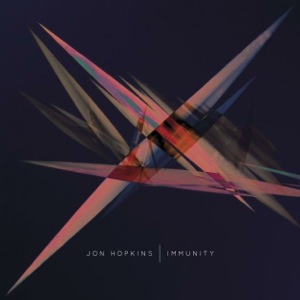
126
Jon Hopkins
Immunity
[Domino; 2013]
Perhaps Immunity‘s core USP lies in the delivery. Jon Hopkins presented this as a whole, pulling off an interesting trick of allowing the tracks across the album to effectively compliment one another, sounding better in retrospect. That may sound obvious, but given that even high-calibre electronic releases from top level artists are often collections of disparate EPs and 12″s as opposed to being taken as albums proper – from Pink right back to Incunabula – it’s commendable that Hopkins keeps it varied but not disjointed. The edges are rounded off the eye-popping agitation as the record fades to a gentle ambiance. Even in mastering, the volume dramatically dips. There’s a delicious irony in an album ending on the faintest of whimpers blowing his career wide open – now nominated for a Mercury Prize, no-one realistically believes he’ll win, but it’s indicative of a well-deserved breakout year. Dude’s a BPM fan as well, so props.
– Gabriel Szatan
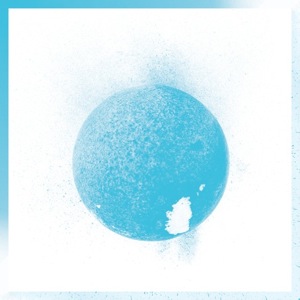
125
Baths
Cerulean
[Anticon; 2010]
It took a couple of years and another album, Obsidian, before Will Wiesenfeld’s aims on Cerulean became entirely clear. The suburban Los Angeles based beatmaker, who records as Baths, had already spent a few years trading in off-kilter electronic experimentation as Post-Foetus, but Cerulean proved to be his first formal excursion into the sort of melodramatic songwriting that he’d explore more clearly on Obsidian. Instrumental numbers like “Aminals” and non-album contemporary cut “Seaside Town” showcased Wiesenfeld’s ties to the then nascent LA beat scene and a fondness for the winking self-referentiality contained therein, but Cerulean truly shined in the bedroom romanticism of some of the tracks more minor numbers. “Rain Smell” and “You’re My Excuse To Travel” turned small sentiments into winning mantras, soundtracked by woozy beats indebted to Wiesenfeld’s stint as an ambient composer under his Geotic name. Obsidian delved further into that mode, but the moment’s that it’s explored on Cerulean do it best.
– Colin Joyce

124
Emeralds
Does It Look Like I’m Here
[Editions Mego; 2010]
If you’re a fan of straight-up, good-times, pogo-worthy indie rock, you’ll likely be a little fed up as we approach 2014 waiting for the charts to swing back around; if freeform, forward-thinking electronic music is more your bag, this Yung Decade will have been immensely gratifying. 2010 was a standout year, with an array of talent surfacing from the nether regions – Walls, Sun Araw and Actress all entered the public conscience, while Oneohtrix Point Never’s Returnal and Emeralds’ Does It Look Like I’m Here crossed over proper, settling into regular rotation for plenty who had never veered so far left before. People were hardly lacking in choice for hypnotic drones, glossy ambience and buzzy low-end, but the latter pair cemented Editions Mego as the flagbearing label of the loosely connected scene. While key members Steve Hauschildt and Mark McGuire have produced fine solo records, it was on this album where the Ohio noiseniks really hit on something special, dialling down the harshness in favour of softer textures and weaving circles around one another with more conventional chord progressions. The end impression is that of a series of vapour trails left behind as Emeralds continued their ascent; twirling, twirling, twirling towards freedom.
– Gabriel Szatan

123
Autre Ne Veut
Anxiety
[Software; 2013]
Introspection and self-reflection are not exactly frequent fodder for electronic dance-pop music. Thankfully Arthur Ashin, better known as Autre Ne Veut, has a master’s degree in psychology so he knows exactly what buttons he needs to push. On his sophomore record, Ashin smooths out his experimental, glitchy stylings of his debut in favor of a more polished – and more personal – pop pastiche. The result is a record that’s upbeat while still being serious, and always supremely catchy.
The album starts brilliantly with the one-two punch of “Play by Play” and “Counting,” successfully balancing soulful hooks with a huge amount of heart. Elsewhere on the album, “Ego Free Sex Free” manages to be sensual without becoming saccharine – something today’s R&B crooner should strive to replicate. By the end, Ashin has persuaded listeners to shed their own existential fears and (ahem) anxieties about dying and ultimately point it into a more positive direction. It’s much more fun that way.
– Brian Hodge

122
St. Vincent
Actor
[4AD; 2009]
With her first album as St. Vincent, Marry Me, Annie Clark stepped out of the shadow of the previous artists with whom she’d been associated, but it was with her second album Actor that she demanded the spotlight. With Actor she found ways to mesh together her acrobatically beautiful voice with her guitar badassery, while still maintaining an ear for detailed and delicate arrangements. The songs all came together into what she called her “animatronic Technicolor ride,” which certainly describes the bright and vivid sound of the songs – but it overlooks the dark nature of them. Lingering in the lyrics are a host neuroses (“what do I keep from the strangers who sleep where I sleep” she sings on the opener); confessions(“Tomorrow’s some kind of stranger who I’m not supposed to see” from “The Neighbors”); accusations (“you’re a supplement, you’re a salve” opens “Actor Out Of Work,” before going even further); and gruesome images (“Laughing With A Mouth Of Blood”). These facets are tucked into tightly written and catchy pop songs that populate the album, which only adds to its intrigue and replayability.
– Rob Hakimian

121
The Horrors
Skying
[XL; 2011]
The Horrors’ musical transformation from their 2007 debut album to 2009’s excellent Primary Colours was one of the most surprising in recent musical history. For 2011’s Skying they didn’t make another transformation, but rather smoothed over the cracks and brightened up the sound of their sophomore record. Under their own guidance this time, having been let loose by Portishead’s Geoff Barrow who produced their last album, The Horrors truly grew into their sound. From the horn splashes of “Endless Blue,” to the brutal rockers “I Can See Through You” and “Moving Further Away” and right to the heartbreaking conclusion of “Oceans Burning,” Skying feels like the Londoner’s most complete and well-rounded album to date. None of the songs here can be said to have a great hook, but The Horrors are not looking for radio play with Skying, instead they’ve brought to the table a complete package with an artistic statement that they are a band to be taken seriously, and you’d better start doing so, because they seem like they’re going to be around for a lot longer than any of us would have thought in 2007.
– Rob Hakimian

120
Savages
Silence Yourself
[Matador; 2013]
“The world used to be silent/ Now it has too many voices.”
Savages’ guiding philosophy is linear thinking in a non-linear world. In a society obsessed with instant gratification, their music kind of parched, high-concept art that thrives demands your attention. Conveniently enough, it’s the type of music that’s impossible to ignore anyways. Hyper-focused and hyper-aggressive, with buzzsaw riffs and brawny basslines designed to move the ground beneath you, Silence Yourself is equally invested in its songs and their delivery. Savages recorded the songs live in studio, and on songs like “Shut Up” and “City’s Full” they display a tightness that only refines the clarity of their message. Not for the nebbish, Silence Yourself confronts you and forces a response.
– Brendan Frank

119
Owen Pallett
Heartland
[Domino; 2010]
A name change is a pretty big event for an artist, and for Owen Pallett, it meant he could avoid being mixed up with those pesky Final Fantasy games (and become much more Google-able, thankfully). What seems bigger, though, is the sound that came with the change. Heartland, the first album to bear Pallett’s name, is his fullest, and arguably his most detailed work to date. With the likes of the Czech Symphony string section at his whim, he creates a new world (Spectrum) that even comes with it’s own prelude record (the preceding Spectrum, 14th Century EP) and central character (Lewis). It’s just as well Pallett knows how to deal with grandiosity appropriately, making the pressing, rigid strings on “Keep The Dog Quiet” and almost Noël Coward-like fluttering pomp of “Flare Gun” sound like it’s all relevant and in his grasp.
So tightly is it in his grasp, that he’s able to play about more than he has on other records, dropping into monotone at a moment’s notice (the titular lines of “Oh Heartland, Up Yours!”), or uttering a line so wrapped in fantasy and intrigue, you can’t but not enter into his wonderful world (“I took No-Face by the beak, and broke his jaw, he’ll never speak again”). And amidst the strings, woodwind, brass, and thundering drums, he still manages to insert plenty more fresh and lively instrumentation, like the near-danceable bass on “Tryst With Mephistopheles” or scuttling electronics on stand-out single “Lewis Takes Off His Shirt.” If there’s fault to find with Heartland, it’s that you have to leave Spectrum so soon; thankfully going back over and over a journey easy to make.
– Ray Finlayson

118
Mesita
The Coyote
[Self-released; 2012]
An experimental work that still pulls you by the ear into its world, James Cooley’s semi-autobiographical The Coyote is emotive and sprawling, cataloguing the perils of young adulthood with a steady, matured voice. But for all of its viscous subject matter, the real triumph here is in Cooley’s music. He speaks just as effectually with his guitar as his voice. Moving along with bottomless, expressive chord patterns, mile-per-second flashes on the upper frets, sly drum work, and an array of electronic flourishes, The Coyote has as many personalities as it does songs. Cooley has to be one of the most criminally underrated artists working today.
– Brendan Frank

117
Broken Social Scene
Forgiveness Rock Record
[Arts & Crafts; 2010]
Almost every song on Broken Social Scene’s previous self-titled album sounded like three bands were trying to play them at the same time. It was an interesting experiment, but the reliably unpredictable Canadian lynchpins have remained just that. Forgiveness Rock Record is less chaotic and more polished due in large part to the decision of masterminds Kevin Drew and Brendan Canning to trim the band’s roster from 19 to 7. Thankfully, the restraint shown in the instrumentation doesn’t carry over into other parts of the music. Forgiveness Rock Record is still admirably ambitious and overflowing with ideas, from the gleaming electronic wash of “All to All” to the delicately epic opener “World Sick.” Even if some of them stick better than others, the energy is undeniable, and it’s a suitably glossy hodgepodge of talent that fits in nicely with their catalogue.
– Brendan Frank
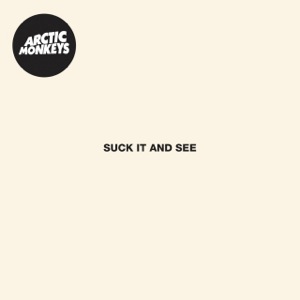
116
Arctic Monkeys
Suck It And See
[Domino; 2011]
After moving in a new direction on their third album, 2009’s Humbug, with QOTSA’s Josh Homme behind the decks, the Sheffield quartet opted for a more traditional sound on its follow-up Suck It and See. Released in June 2011 Suck It and See finds Arctic Monkeys at their best; combining harder rock tracks with frontman Alex Turner’s ballads.
The album is solid all the way through with “Piledriver Waltz” being particularly lovely, and far superior of the Alex Turner solo version released earlier the same year as part of the Submarine soundtrack EP. Suck It and See stacks up well against the rest of the Arctic Monkeys’ releases but above all it’s a showcase of Turner’s maturing lyrical ability and the way he combines witty and nonsensical lines with serious counterparts. The album’s finest tracks are all the slower, more lyric-focused, tracks – the previously mentioned “Piledriver Waltz,” the title track and “Reckless Serenade” being the most impressive on an impressive album.
– Johan Alm
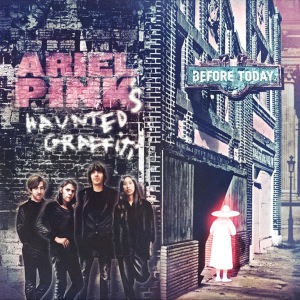
115
Ariel Pink’s Haunted Graffiti
Before Today
[4AD; 2010]
I can understand and somewhat empathize with longtime fans’ concerns that this was Mr. Pink’s sellout moment, what with its 4AD release and promotion on such mainstream programs as Late Night With Jimmy Fallon and, perhaps most worryingly, it’s non-lo-fi sound. After all, wasn’t that “recorded in my bedroom on cassette” sound an inherent part of Ariel’s appeal?
It was, but I also think this argument fails to give proper credit to Pink’s abilities as a pop songwriter, which he’s displayed since (at least) the days of “Are You Gonna Look After My Boys?” off 2007’s Scared Famous. Those pop sensibilities get the studio treatment they deserve on Before Today, from the sunny/fuzzy psychedelia of “Bright Lit Blue Skies” to the warped rock anthem of “Little Wig” and the undeniable catchiness of “Round and Round,” perhaps Pink’s most successful attempt at marrying pop radio hooks with nostalgic atmosphere. If this album is what “selling out” looks like, I wish artists would do so more often.
– Josh Becker
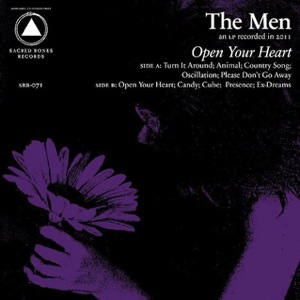
114
The Men
Open Your Heart
[Sacred Bones; 2012]
A few adjectives for Open Your Heart: rambunctious, crazy, mental, heartfelt. All valid descriptions of the The Men’s third and most acclaimed album to date, but on their own, these words don’t feel enough. Rambunctious, but to greatest extent of the word, especially when “Cube” is fluttering crazily about all over the place; crazy and mental, but in the way you can practically feel a hundred sweaty fans pushing you about at one of the band’s live shows (and most evident on the album’s opening one-two punch of “Turn It Around” and “Animal”); and yes, even amidst all the action, there’s still a chance for the band to show their softer side without sounding pastiche or even saccharine. On “Candy,” lead vocalist Mark Perro sounds broken but nonchalant, and it shows in his lyrics.
All considered, and this is The Men “toned down.” Granted, there’s not as much as fuzz as on the preceding albums, but they still know how to kick a door open with their power, even if it is in the form of the injected late night swagger of “Country Song,” or the deadpan lawyer-like personality of Perro on “Oscillation” as the other band members gracefully spiral upwards. Full of expertly infused moments of genre bending and excitement, Open Your Heart is a shining example of why The Men are so important, not just on the punk scene, but on the New York scene, if not a whole further afield.
– Ray Finlayson

113
Sharon Van Etten
Tramp
[Jagjaguwar; 2012]
Even though Sharon Van Etten goes from strength to strength with each release, her output still feels understated. This is odd, especially since her latest album is her expanding out more than she has. From the beginning jangle of “Warsaw,” she sounds like she’s rattling off the chains of a past life, and from there she breathes deeper and reaches higher than before. Granted, the help of Aaron Dessner on production and the likes of Zach Condon and Julianna Barwick as collaborators is something of an essential aid on Tramp, but if you look beyond the additional arrangements and fine-tuned production, you see can visibly see Van Etten growing and becoming her own force. The bitterness in “Serpents”; the breeziness of “We Are Fine”; the realization that “You’ve got to lose sometimes”; and even the lurch of “In Line” all reveal someone more assured not just in herself, but in her music.
– Ray Finlayson
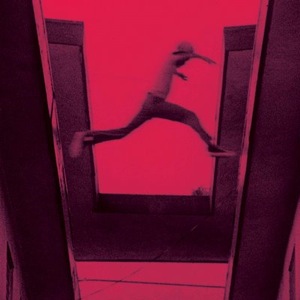
112
Mos Def
The Ecstatic
[Downtown; 2009]
The Ecstatic was a total surprise – a release by an artist many, including myself, had all but written off. After a stellar debut and equally stellar album-length collaboration with Talib Kweli, Mos Def’s career took quite the nose-dive. The New Danger was interesting but ultimately more promising in idea than execution, and True Magic – the album that preceded The Ecstatic, was a toss off both in content and method of release – no artwork, no promotion, no substance. Mos Def had transitioned from the king of conscious hip-hop into an artist seemingly more concerned with his acting than his rap career. Who knew The Ecstatic, out of nowhere, would not only re-establish Mos Def as one of the premiere rap artists of our time, but also end up being his greatest artistic achievement thus far.
It’s rare for a rap album to have cohesion from a production standpoint, even rarer still when an album features such a long list of producers. But somehow, despite The Ecstatic having a musical identity that pulls from a world-spanning number of different genre influences, it manages to flow beautifully from track to track. And most importantly, the MC at the center of it all holds his own against the impressive and often larger-than-life production. Mos Def has never sounded as urgent or energized as he does on The Ecstatic, and it results in the rare type of hip-hop record that features a singularity in vision both musically and lyrically.
– Cole Zercoe

111
Spiritualized
Sweet Heart Sweet Light
[Fat Possum; 2012]
Tales of journeys through hell, rarely spend time on the reconciliation afterwards. After Jason Pierce’s harrowing health scares came to a close post-Songs in A&E, all of his recorded material has spent time in that delirious afterglow. Gospel choirs and krautrock collide on Sweet Heart Sweet Light in glorious uplift, smearing buzzy guitars and wholesome “la-la” over taut motorik beats. With Spiritualized, Pierce’s work had run the gamut from spaced out psychedelia to tortured Brit-pop, but Sweet Heart Sweet Light covers all of those styles and turn them into something uniquely warm and heaven-gazing. When you make it through hell, you’ve earned the right to celebrate it. If Pierce could manage to do so for a couple of albums more he’ll have carved out a nice little optimist-rock niche. So far Sweet Heart is the best of that bunch.
– Colin Joyce

